Memorabilia from China's Cultural Revolution
- Published
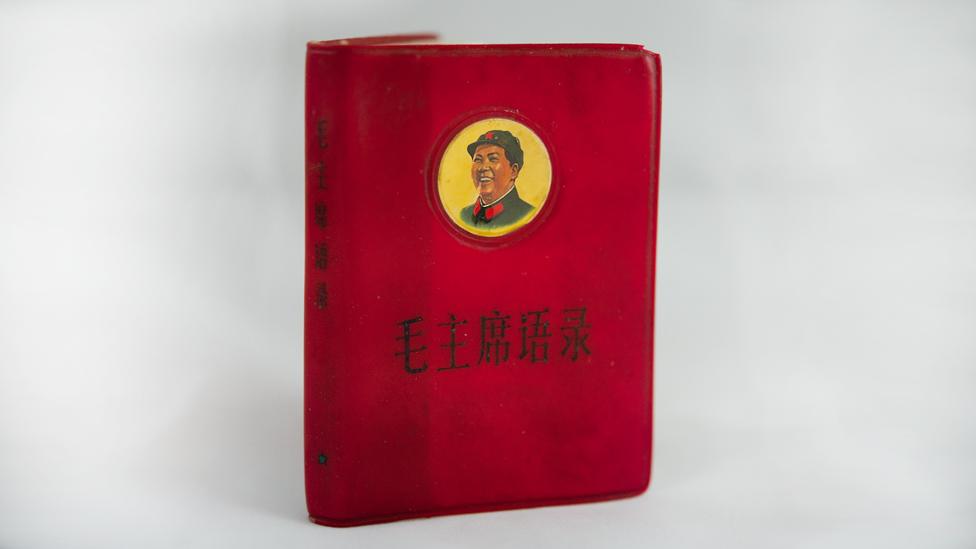
At the peak of the Cultural Revolution, everyone had to carry a copy of Mao Zedong’s little red book. It was a powerful brainwashing tool, and its omnipresence ensured that only ideas consistent with Mao's quotes were considered acceptable. Formally known as “Quotations from Chairman Mao”, the red book contained 427 quotes on subjects such as the Communist Party, class struggle and socialism, youths, women and the arts.

It is estimated that more than five billion copies of the red book were printed, in more than 40 languages, making it the second most popular printed book after the Bible. Marshall Lin Biao, who was Mao's right hand man, played a pivotal role in promoting the red book, and wrote the preface. After Lin Biao fell out of favour with Mao, many people had to cross out his name from the red book to show their allegiance.
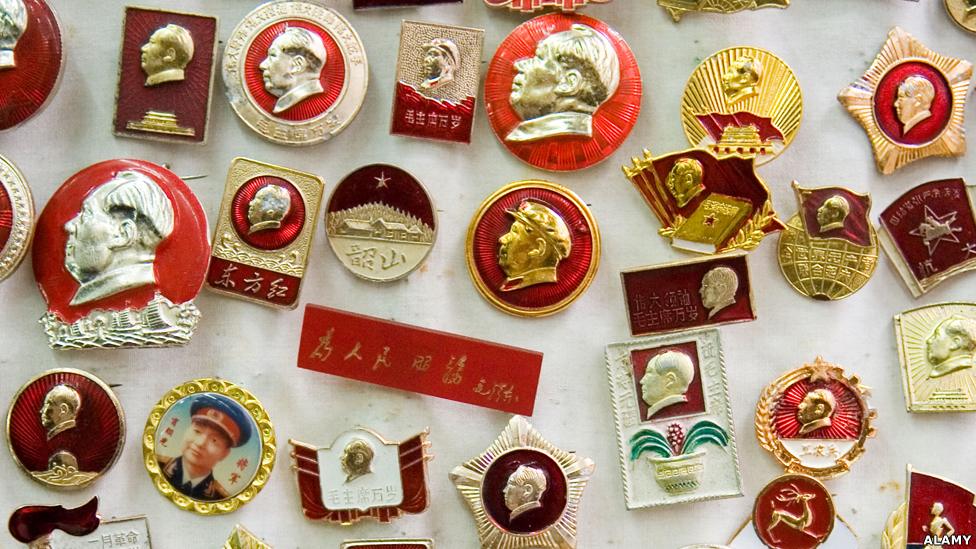
There was a huge personality cult surrounding Mao Zedong. About two billion badges of Mao are estimated to have been produced during the Cultural Revolution. After 1969, production slowed - reportedly because Mao said the aluminium was needed for aeroplanes. The badges were most prevalent between 1966 and 1969, when everyone of “good character” wore one to show their loyalty to the “Great Leader”.

Many families in China kept objects from the Cultural Revolution as memorabilia. This badge belonged to a member of Yuwen's family.
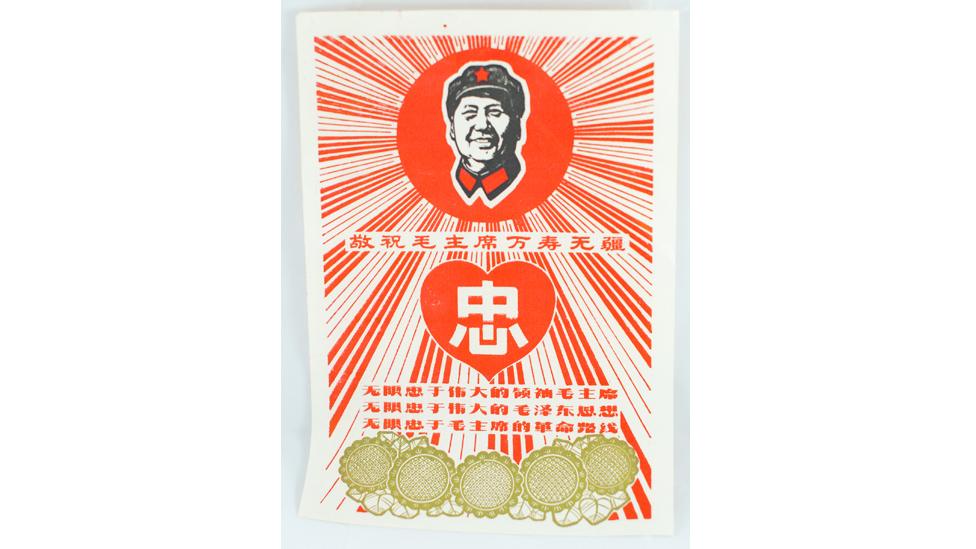
Mao’s personality cult also went beyond the badges and the little red book. There were propaganda posters inside homes, classrooms, meeting halls, office buildings and factories. The line beneath Mao’s image says: Wishing Chairman Mao a long life.
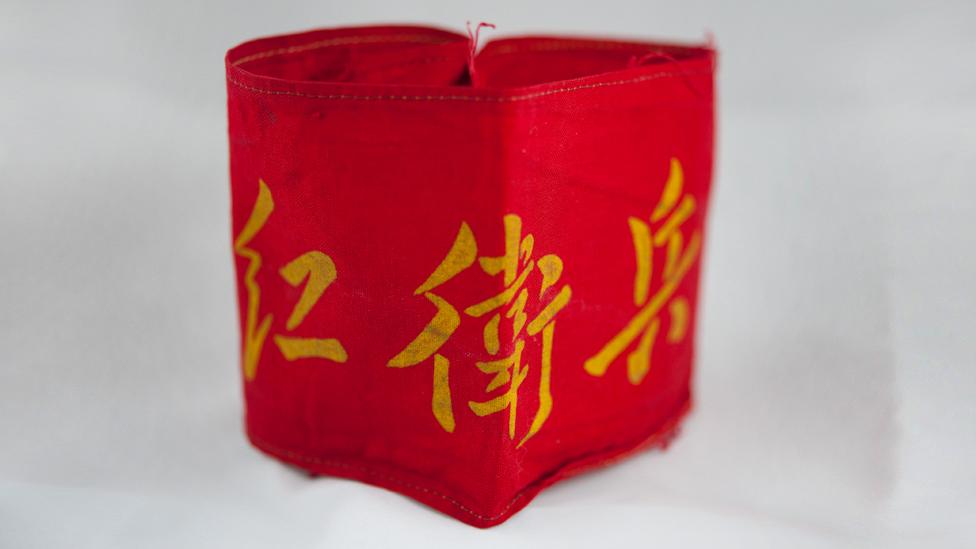
This is an armband for the youth organisation generally known as the Red Guards. They were first set up in high schools and universities in Beijing in the summer of 1966 and soon spread across the whole country. The Red Guards regarded themselves as defenders of Chairman Mao - many beat those considered bourgeoisie or disloyal, including their teachers.
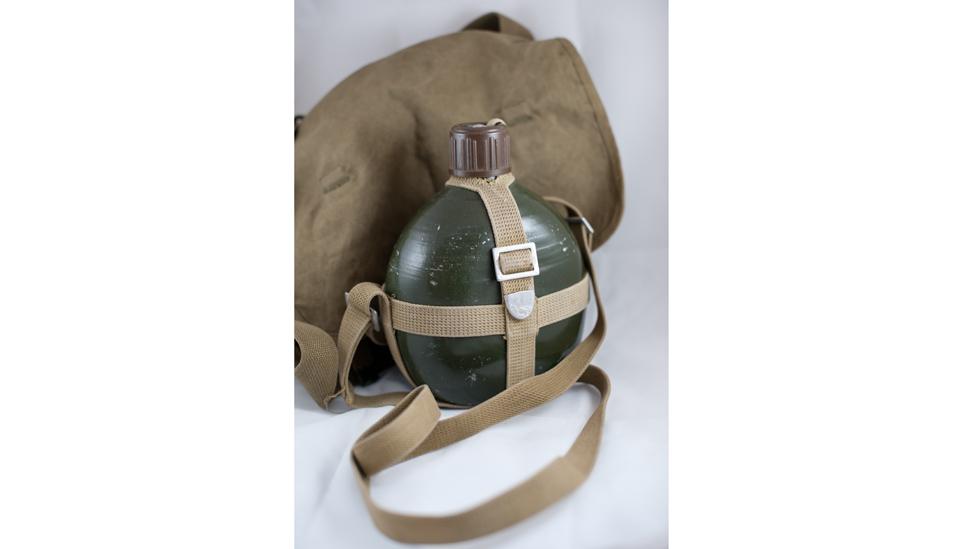
During the Cultural Revolution, universities and schools were run like semi-military institutions. Young people carried army water cans and military-style green bags when they marched to rallies and worked in the fields.

While Chairman Mao was revered, religious objects were defaced. The Red Guards attacked objects related to the "Four Olds": old thinking, old culture, old customs and old habits. Temples, tombs and heritage sites, and rare books and paintings, were destroyed. This statue of Buddha, in Ling Yin Temple in Hangzhou, China, is plastered with signs that read "destroy the old world" and "establish a new world".